Text
All Your Chocolate Rain Belong To Us?
In Burgess’s essay, “All your chocolate rain are belong to us?”, incorporates key concepts to do with virality and the dynamics of participatory culture. Essentially, the argument suggests that the main medium of social networking on Youtube is “viral videos”, yet it also allows the common norms of other social networks such as commenting and sending messages.
It is clear that the potential for marketing through social networks is so vast as the Internet continues to grow. The Internet, respectively, creates many opportunities for people through these social networks. “Viral videos” can be defined as videos with high popularity rates and also have rapid “spreadability” rates via the Internet. Burgess suggests that videos are “not messages, and neither are they products, they are mediating mechanisms” whereby cultural practices originate, multiply and are imitated.
Youtube is said to have an active body of users, hence a growing participatory culture. Furthermore, the practicality of Youtube’s layout allows users to upload videos themselves and allows others the see and comment on them; therefore they become producers of media.
However, a small number of these videos become viral. The videos often attract “active, participatory and creative engagement from other participants.” Youtube serves as a medium where communication is formulated through the viewing and sharing of different videos and where people can contribute ideas and offer feedback by commenting on the videos.
0 notes
Text
Power Through the Algorithm? Part II
Here is the second part of David Beer's article:
These three features are prominent characteristics of Web 2.0 developments, where users are generating metadata ‘tags’ that organize and categorize the user-generated content, where social networking site profiles often provide detailed impressions of people’s lives, where these profiles are clearly integrated as mundane and ordinary parts of how people live, and where the emphasis is on the ‘invention’ of new content, new ‘social relations’ and even new ways of presenting content in the form of creative visualizations of ordinary things.
This would consider how and why individuals divulge information about themselves, how they play with and within the boundaries of the software, how they react to and resist the impulsions written into the codes, how they reflexively design profiles, how they hold back or give information, what they know about how they are being sorted, how and with what consequences they employ a classificatory imagination as they tag and classify content, what they come across on Web 2.0 and how they come across it.
It might be that as users begin to see how the information that they provide in the form of content impacts on the constitution of their life-worlds, so they may begin to actively shape the information so as to direct the way that the software reacts to them.
This would attempt to understand how these systems work, how algorithms are deployed, which data is fed into the algorithm, which relational databases are drawn upon, how metadata tagging feeds into searches and into what people find, and how the information held in profiles determines what the individual encounters.
Rather than resistance we may encounter reflexive and skilled agents shaping their profiles so as to anticipate the effects the information they provide might have and steer things in the direction they wish – a process we can think of as being about, as The Clash put it, having the right profile.
The reason that a focus on Web 2.0 is significant and needed is because the popular web applications it represents are driven by users providing endless and virtually unlimited information about their everyday lives.
This would require an understanding of the economics of the sites, how they create money and for whom, who is building the sites, what involvement they have after the initial stages and development, how they harvest or data-mine the information that is created as users participate in creating content, and so on.
The reading of the literature provided in this article suggests that what is needed are descriptions of ‘power through the algorithm’, developed by focusing on those working with and designing the applications and software, by focusing on the applications and software as material entities, or by focusing on those who engage with the software in their everyday lives .
What this article implicitly suggests is that the Web 2.0 bandwagon will need to be counteracted by some strong and perceptive criticism that works out the commercial underpinnings, new hierarchies , and rules of engagement, as well as the powerplays that are occurring through and within Web 2.0 applications.
Considering how popular Web 2.0 applications like MySpace, Facebook, Youtube, Delicious, and Flickr have become, there is a pressing need to explore with some detail this vision of power through the algorithm operating in their incorporation into users’ lives.
This article suggests that there is a need to filter existing accounts of Web 2.0 through the emergent literature that we might describe as being about a ‘new new media ontology’ .
0 notes
Text
Power Through the Algorithm? Part I
The 'Power Through the Algorithm? Participatory Web Cultures and The Technological Unconscious' is an article written by David Beer in 2009. In thi spost we will see what the author exposes in his article.
The prominent new media theorist Scott Lash has recently spoken of what he describes as a ‘new new media ontology’.
What is useful about this slightly oblique terminology is that it can be used to group together a range of emergent work in the social sciences, and particularly in urban studies, that picks up on the technological challenges to human agency offered by the decision-making powers of established and emergent software algorithms.
In attempting to translate Lash’s work, Roger Burrows has suggested that the difference here is that information technologies now ‘comprise’ or ‘constitute’ rather ‘mediate’ our lives.
The shift that Lash is intimating, and which
is being picked up on across a variety of contemporary new media work , is toward information becoming a part of how we live, a part of our being, a part of how we do things, the way we are treated, the things we encounter, our way of life.
Lash’s ‘new new media ontology’ is useful in categorizing the shared analytical objectives of a range of writers who are concerned with the
various ways in which ‘software is increasingly making a difference to the constitution and production of everyday life’ .
This work, by writers including Nigel Thrift, Katherine Hayles and Steve Graham, describes the ways in which software acts in often unseen and concealed ways to structure and sort people, places and things.
What Hayles describes here is what Thrift, in his key work on ‘knowing capitalism’, refers to as the ‘technological unconscious’, the operation of powerful and unknowable information technologies that come to ‘produce’ everyday life .
Clearly the suggestion is that these technologies will become increasingly powerful and ubiquitous, but Hayles, like others , does not suggest that they will be infallible or without fault.
On this issue of the affective powers of the ‘new new media ontology’, Steve Graham’s work is particularly useful in developing some concrete illustrations of how software orders and divides.
Lash’s article describes a shift toward forms and understandings of power that in some way defy description through a notion of hegemony – this is accounted for as a material change in social structures and as a more gradual reworking of approaches to power by cultural analysts.
Through this power binary Lash develops in detail a vision of a hegemonic age, concerned with ‘power-as-hegemony’ and dominance through ideology, and a post-hegemonic age, where the hegemon has moved out into the everyday and power operates from the inside rather than from above.
Where we might once have spoken of ‘constitutive’ and ‘regulative’ rules, Lash suggests, ‘in a society of pervasive media and ubiquitous coding, at stake is a third type of rule, algorithmic, generative rules’ .
Before continuing, it should be noted that Lash does not claim that these new forms of power erase the power structures of the past, but instead that a ‘society of ubiquitous media means a society in which power is increasingly in the algorithm’ .
In short then, the sinking of software into our mundane routines, escalated by mundane technologies such as those found in the popular social networking sites, means that these new vital and intelligent power structures are on the inside of our everyday lives.
0 notes
Text
Algorithms
An ‘algorithm’ is a term that can be used in various ways: for software engineers, they are simple things whereas for the broader public, algorithms are something complex. The term ‘algorithm’, was coined to honor the contributions of the Persian mathematician Muhammad ibn Mūsā al-Khwārizmī, noted for having developed the fundamental techniques of algebra.
For the makers of algorithms, the term refers specifically to the logical series of steps for organizing and acting on a body of data to quickly achieve the desired outcome. MacCormick, explaining algorithms to a general audience, calls them "Tricks", by which he means "Tricks of the trade".
An algorithm is a recipe composed of programmable steps; most of the "Values" that concern us lie elsewhere in the technical systems and the work that produces them. For its designers, the algorithm comes only after the generation of a "Model." The model is the formalization of a problem and its goal articulated in computational terms.
The algorithm is merely the procedure for addressing the task as operationalized: steps for aggregating those assigned values efficiently, or making the matches rapidly, or identifying the strongest relationships according to some operationalized notion of "Strong." All are in the service of the model's understanding of the data and what they represent, and the model's goal, and how it has been formalized. There may be many algorithms that would reach the same result inside a given model, just as bubble sorts and shell sorts will both alphabetize lists of words successfully. The algorithms we're concerned about today are rarely designed to reach a single and certifiable answer, like a correctly alphabetized list.
Most common algorithms produce no certifiably “correct” results at all but only turn out results based on many possible pathways.
Algorithm designers are not pursuing correctness; they're pursuing some threshold of operator or user satisfaction- understood in the model, perhaps, in terms of percent clicks on the top results; or percentage of correctly identified human faces from digital images.
Contemporary algorithms, especially those involved in some form of machine learning, are also "Trained" on a corpus of existing data. The algorithm is then run on these data so that it may "Learn" to pair queries and results found satisfactory in the past, or to distinguish images with faces from images without. The training data must be a reasonable approximation of the data that the algorithm will operate on in the wild.
The most common problem in algorithm design is that the training data turn out not to match the data being operated on in the wild, in some consequential way. Sometimes new phenomena emerge that the training data simply did not include and could not have anticipated; just as o en, something important was overlooked as irrelevant or was scrubbed from the training data in preparation for the development of the algorithm.
The algorithm designed may later prove less accurate with a more diverse corpus of photos, and may therefore seem to have deeply problematic implications. These thresholds can be dialed up or down in the algorithm's calculation of which webpage has a score high enough to warrant ranking it among the results returned to the user.
Finally, these exhaustively trained and finely tuned algorithms are instantiated inside of what we might call an application. These applications may embody values as well, outside of their reliance on a particular algorithm.
While it is important to understand the technical specificity of the term, the algorithm has now achieved some purchase in the broader public discourse about information technologies, where it is typically used as an abbreviation for everything described above, combined: algorithm, model, target goal, data, training data, application, hardware.
This technical assemblage stands in for, and o en obscures, the people involved at every point: people debating the models, cleaning the training data, designing the algorithms, tuning the parameters, deciding on which algorithms to depend on in which context.
Perhaps algorithm is coming to serve as the name for a particular kind of socio-technical ensemble, one of a family of systems for knowledge production or decision making: in this one, people, representations, and information are rendered as data, are put into systematic/mathematical relationships with each other, and then are assigned a value based on calculated assessments about them.
What is gained and lost by using the algorithm this way? Calling the complex socio-technical assemblage an algorithm avoids the need for the kind of expertise that could parse and understand the different elements; a reporter may not need to know the relationships between model, training data, thresholds, and application to call into question the impact of that "Algorithm" in a specific instance.
Even algorithm designers, in their discourse, shi between the more precise meaning and this broader use.
This helps account for the way many algorithm designers seem initially surprised by the interest of sociologists in what they do because they may not see the values in their "Algorithms" that we see in their algorithms. After all, questions of value are very much bracketed in the early decisions about how to operationalize a social activity into a model and lost in the minuscule, mathematical moments of assigning scores and tuning thresholds.
Calling all these social and technical elements the algorithm may give us a handle with which to grip what we want to closely interrogate; at the same time, it can produce a "Mysti ed abstraction" that, for other research questions, it might be better to demystify.
The information industries often invoke the term algorithm to the public as well. To call a service or process an algorithm is to lend it a set of associations: mathematical, logical, impartial, consistent. Algorithms seem to have a "Disposition towards objectivity"; this objectivity is regularly performed as a feature of algorithmic systems. Conclusions described as having been generated by an algorithm wear a powerful legitimacy, much the way statistical data bolster scientific claims.
A market prediction that is "Algorithmic" is different from a pre- diction that comes from expert brokers highly respected for their expertise and acumen; a claim about an emergent social norm in a community-generated by an algorithm is different from one generated ethnographically.
Each makes its play for legitimacy and implies its framework for what legitimacy is.
In the context of nearly a century of the celebration of the statistical production of knowledge and long-standing trust in automated calculation over human judgment, the algorithmic does enjoy a particular cultural authority.
More than that, the term offers the corporate owner a powerful talisman toward criticism, when companies must justify themselves and their services to their audience, explain away errors and unwanted outcomes, and justify and defend the increasingly significant roles they play in public life.
When critics say, "Facebook's algorithm," they o en mean Facebook and the choices it makes, some of which are made in code.
Information services can point to "The algorithm" as having been responsible for particular results or conclusions, as a way to distance those re- results from the providers.
The term generates a somehow separate entity, like the assembly line inside the factory, that can be praised as efficient or blamed for mistakes.
The term algorithm is also quite often used as a stand-in for its designer or corporate owner.
This may be another way of making the earlier point, that the singular term stands for a complex socio-technical assemblage: Facebook's algorithm means Facebook, and Facebook means the people, things, priorities, infrastructures, aims, and discourses that animate the site.
It may also be a political-economic conation: this is Facebook acting through its algorithm, intervening algorithmically, build- ing a business precisely on its ability to construct complex models of social/expressive activity, train on an immense corpus of data, tune countless parameters, and reach formalized goals extremely efficiently.
Maybe saying "Facebook's algorithm" and meaning the choices made by Facebook the company is a way to assign accountability.
It powerfully makes the algorithm theirs, reducing the distance some providers put between "Them" and "The algorithm".
On the other hand, connecting the algorithmic mechanism and the corporate owner may obscure the ways these two entities are not always aligned.
We must distinguish between things done by the algorithmic system and things done in other ways, such as the deletion of obscene images from a content platform, which is sometimes performed algorithmically and sometimes manually.
It is crucial to note slippage between a provider's financial or political aims and the way the algorithmic system functions.
Coating algorithmic mechanism and corporate owner misses how some algorithmic approaches are common to multiple stakeholders, circulate among practitioners in specific ways, and embody a tactic that exceeds any on implementation.
0 notes
Text
Fuchs vs Jenkins
In his 2014 book, Social Media: A Critical Introduction, Christian Fuchs offers a criticism of Henry Jenkins’ concept of participatory culture based on four central points. Today we will analyze the main aspects of only three of these points.
—•—
But what is participatory culture?
Jenkins defines the concept of participatory culture as a culture “in which fans and other consumers are invited to actively participate in the creation and circulation of new content” (Jenkins 2008).
He presents the idea as empowering to consumers, discussing the positive power they are attributed in shaping culture.
Yet Fuchs criticises Jenkins’ ides and we will see why.
3.1 — The Notions of Participation and Participatory Culture
In the first point, Fuchs explains that Jenkins’ notion of participation is misleading, since it overlooks the political and political economic aspects implied by the theory of participatory democracy.
As Fuchs advances, Jenkins proposes a reductionist approach in which he “reduces the notion of participation to a cultural dimension, ignoring the broad notion of participatory democracy and its implication for the Internet” (Fuchs 2014, 57). Therefore, according to Fuchs, Jenkins’s concept is simplistic and not well grounded theoretically.
Furthermore, Fuchs is of the opinion that Jenkins fails to engage with important issues implied by the rise of the internet culture.
However, according to Fuchs, “participatory culture is a demand that speaks against such problems, whereas participatory culture is a rather harmless concept mainly created for white boys with toys who love their toys” (Fuchs 2014, 58). And once more, Jenkins offers another reductionist approach.
3.3 — Social Media and Participatory Culture
The third point of criticism against Jenkins raised by Fuchs is concerned with the dominance patterns of social media. Jenkins presents contemporary media as empowering to consumers, elaborating that the latter enables the production process and so resists corporatism. Yet, such a claim overlooks the reality of cases of corporate dominance.
While emphasizing the positive aspects of collaborative culture, Jenkins fails to address dominance issues, omitting to discuss the important fact that some voices are more powerful than others.
Fuchs says, “He wants to focus on the aspects of pleasure and creativity and to leave the topic of exploitation to others and does not, thereby, grasp the dialects at work and the relations of dominance we find on web 2.0” (Fuchs 2014, 61).
3.4 — Henry Jenkins and Digital Labour
The fourth and last point of Fuch criticism towards Jenkins regards Jenkins’ dismissal of the digital labour debate.
The latter is concerned with the analysis of unpaid user labour, and other forms of labour that are necessary for the accumulation of capital in ICT industries.
Jenkins dismisses the argument on the basis that consumers enjoy the role they play, thus not rendering it exploitation.
As Fuchs responds, a capitalist society is based on the exchange of capital: loving what they do therefore does not render them less exploited.
—•—
So, which are the two parts of the medal?
Jenkins believes that new forms of media have allowed a new participatory culture, where all kinds of people can engage in discourse. It is a way to connect with people.
Fuchs, however, argues that while we enjoy sharing our ideas, we are not the only ones benefitting. Those who benefit the most are large corporations which render us as slaves of the establishment. We do receive a bit of profit but those who receive a huge bulk of it are the corporate owners.
In my opinion both Fuchs and Jenkins are right. I agree with Jenkins about the aspec of connecting with others but I also agree with Fuchs idea that we are slaves of a machine.
What do you think?
Write it in the comments!!
0 notes
Text
Memes in Digital Culture
In today’s post we will see four chapters of Limor Shifman’s “Memes in Digital Culture” published in 2014.
A Telegraphic Biography of a Conceptual Troublemaker
The term ‘meme’ was introduced by Richard Dawkins, a biologist, in his book titled “The Selfish Gene” in 1976.
He defined memes as small cultural units of transmission that spread from person to person by copying or imitation. According to Dawkins, memes are defined as replicators that undergo variation, competition, selection and retention.
In any moment, memes are competing for attention of the hosts, but only memes that are suited to their sociocultural environment spread rapidly. Moreover, Dawkins also noticed that memes tend to be replicated together by sustaining and strengthening each other; he calls these groups “coadapted meme complexes”.
The word ‘meme’ derives from the Greek mimema, signifying ‘something which is imitated’, which Dawkins then shortened to rhyme with ‘gene’. A similar term appeared in 1870, when the Austrian sociologist Ewald Hering coined the term ‘die Mneme’ from the Greek term mneme which means memory. There were two controversies surrounding memes which are very relevant: biological analogies and ‘who’s the boss’.
The “biological analogies” dispute relates to the tendency to liken memes to both viruses and genes. The meme-as-virus analogy sees a similarity between memes and disease agents. By taking epidemiology as a model, it considers memes as the cultural equivalents of flu bacilli, which is transmitted through the communicational equivalents of sneezes.
The second controversy, ‘who’s the boss’, relates to the issue of human agency in the process of meme diffusion. In her book “The Meme Machine”, Susan Blackmore claims that people are devices operated by the many memes they host and spread. In addition, she says that the dissemination of memes is based on intentional agents with decision-making powers.
According to Michele Knobel and Koline Lankshear, Internet users employ the word ‘meme’ to describe the rapid uptake and spread of a “particular idea presented as a written text, image, language ‘move’ or some other unit of cultural ‘stuff’”. Another difference is the object of analysis: while memes are trivial and mundane artifacts, they reflect deep social and cultural structures whereas Internet memes can be treated as (post) modern folklore, in which shared norms and values are constructed through cultural artifacts.
When Memes Go Digital
According to Dawkins, memes that spread successfully incorporate three basic properties:
longevity,
fecundity and
copy fidelity.
What Internet grasped in that the meme is the best concept to encapsulate some of the most fundamental aspects of the Internet.
The three main attributes ascribed to memes are. (1) a gradual propagation from individuals to society, (2) reproduction via copying and imitation, and (3) diffusion through competition and selection.
First, memes can be understood as pieces of cultural information that pass from person to person. The basic activity of spreading memes has become desired and highly valued and it has been identified as sharing. Nowadays sharing content or memes is a fundamental part of what participants experience as the digital sphere.
A second attributes of memes is that they reproduce by various means of repackaging or imitation. In oral communication, people are aware of memes through their sense, process them in their minds and ‘repackage’ them in order to pass them to others; this process brings memes to change both their form and their content but in the digital era, there is no need to repackage memes because they can spread content by copying, forwarding ecc. There are two main repackaging mechanisms of memes: mimicry and remix. Mimicry involves the practice of ‘redoing’ while instead remixing involves technology-based manipulation (so photoshopping and image or adding a soundtrack).
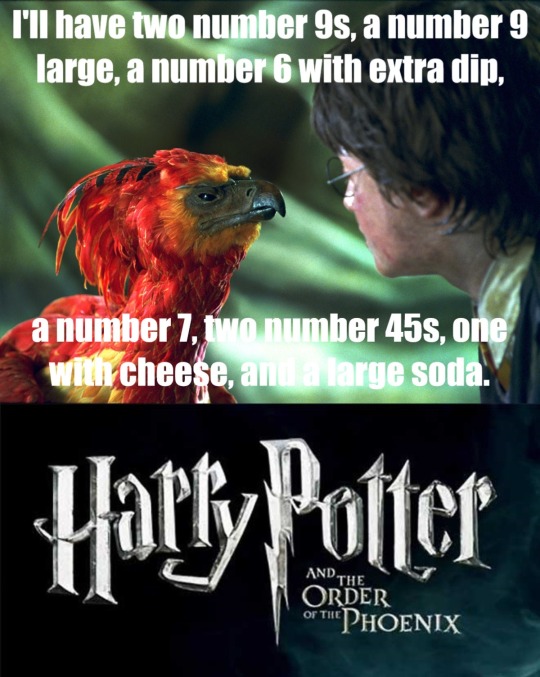
A third attribute of memes is their diffusion through competition and selection. As a matter of fact, the digital era made it possible to have researchers in order to trace the spread of memes.
In the last few years, there is a new phenomenon called hyper-memetic logic, where ‘hyper’ refers not only to the fact that memes spread more widely than before but also to their evolution as a new vernacular that permeates many spheres of digital and non-digital expression. The hyper-memetic nature of contemporary culture can be clarified by a comparison between ‘old’ and ‘new’ memes. But traditional and Internet-based memes differ in several ways.
The first distinction relates to individuals’ awareness of the overall meme-scape, where memes are present both in the public and private sphere as huge sized groups of texts and images. and the third one is the cultural and aesthetic logics of participation which focuses on the notion that memes are not confined to particular spheres.
Defining Internet Memes
Shifman suggests a different kind of approach in defining memes. This suggestion is based on two principles:
(a) looking at diffused units as incorporating several memetic dimensions and
(b) understanding memes not as single entities that propagate well, but as groups of content units with common characteristics.
By connecting the Dawkins’ original idea – that memes are units of cultural items – she decides to isolate three dimensions of cultural items that people could imitate: content, form and stance.
The first dimension relates to the content of a specific text, referencing to both the ideas and the ideologies conveyed by it.
The second dimension relates to form, referring to the physical incarnation of the message.
The third dimension relates to stance, which relates to the information memes convey about their own communication. As a matter of fact, she breaks this third dimension into three sub-dimensions:
(1) participation structures – which delineate who is entitled to participate and how;
(2) keying – the tone and style of communication;
and (3) communicative functions – used according to the typology.
Roman Jakobson identified six fundamental functions of human communications: (a) referential communication, which is oriented towards the context; (b) emotive, oriented towards the addressee and his/her emotions; (c) conative, oriented towards the addressee and available paths of actions; (d) phatic, which serves to establish prolong or discontinue communication; (e) metalingual, which is used to establish mutual agreement in the code; and (f) poetic, focusing on the aesthetic or artist beauty of the construction of the message.
With this 3D breakdown, Shifman defines an Internet meme as: (1) a group of digital items sharing common characteristics of content, form and/or stance; (2) were created with awareness of each other, and (3) were circulated, imitated and/or transformed via the Internet by many users.
Unpacking Viral and Memetic Success
Jonah Berger and Katherine Milkman have conducted the most comprehensive study to date about the features that enhance sharing tendencies on the internet. They highlighted six factors that enhance content’s virality which Shifman calls the “Six Ps”: positivity, provocation of high-arousal emotions, participation, packaging, prestige, and positioning.
1 Positivity (and Humor)
Berger and Milkman understood that people are more likely to share positive stories rather than negative ones. In addition, people prefer sharing items that are perceived as surprising, interesting or useful. People prefer spreading content that makes others feel good and at the same time reflects on themselves as entertaining. This tendency towards positivity is in line with the growing body of evidence about the centrality of humorous content in viral processes; humorous content may be particularly sharable as it tends to be surprising, reason for which it is the key for virality.
2 Provoking ‘High-Arousal’ Emotions
Berger and Milkman found out that people share content that arouses them emotionally – both positively and negatively. Positive high-arousal is embedded in what the authors tag as ‘Awa’ stories – combining positive valence and high levels of emotional arousal. Unfortunately, there were also less cheerful stories that became viral which evoked negative high-arousal feelings of anger and anxiety. Such feelings activate people to do something as for example, share content.
3 Packaging
Berger and Milkman found out that clear and simple news stories spread better than complex ones. This principle may work for other genres and formats as well: simple videos or jokes could prove as more ‘sharable’ since people understand them quickly and assume that others will decode them easily too.
4 Prestige
‘Prestige’ relates to users’ knowledge about the content’s source. It was found that the more famous the author is, the more likely people are to spread to the piece. A similar tendency to rely on famous people – in somewhat different configuration – is apparent in the diffusion of viral videos. This approach generated public support of celebs such as Rihanna and Oprah.
5 Positioning
According to Berger and Milkman, positioning is very important for virality. This manifests in the location of a certain article in digital space and time. Positioning may assume a broader meaning in the context of viral diffusion, which relates to the location of a message within social networks. In viral marketing, the centrality of this feature is embedded in the emphasis on ‘seeding strategies’. Studies proved that approaching the ‘right’ user is crucial in the viral process. There are two types of preferred users:
hubs – people with a high number of connections to others; and
bridges – people who connect between otherwise unconnected parts of the network.
6 Participation
With participation it is meant that viral dissemination may be enhanced if people are encouraged not only to share a certain item, but also to carry out other activities related to it.

To explain memetic success, Shifman separates meme features into those that are characteristic of memetic videos and those that are characteristic of memetic photos. Memetic videos tend to include ordinary people, flawed masculinity, humor, and repetitiveness (actors repeating something over and over) while memetic photos tend to include a juxtaposition between the actor and surrounding elements (often times with a deepened ridicule of the original) or people in frozen-motion poses.
Never thought memes had such a history behind their back. What do you think?
0 notes
Text
Convergence Culture: Where Old and New Media Collide (Part II)
In ‘Quentin Tarantino’s Star Wars?’, chapter four of Jenkins’ Convergence Culture: Where Old and New Media Collide, the author describes the waves of regulation and independence experienced by the fan-fiction culture behind the Star Wars franchise.
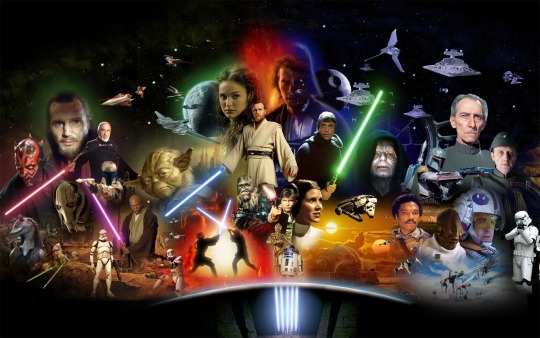
Jenkins begins by discussing the Atomfilms contests that began in 2003, which invited fans of the series to create their own films in the Star Wars universe.The contest spurred many unofficial Star Wars fan videos that became increasingly public with their own publicity campaigns and official posters. Jenkins asserts that because of the internet fan subcultural activities such as these films were gaining increasing attention.
Jenkins compares these fan creations to early American folk traditions of music, quilting and dance in which a sort of grassroots creativity creates art with “no clear division between producers and consumers”. These forms of folk art such as ballads or stories often contained “no clear marks of individual authorship,” partly because of how broadly they were circulated, modified, and retold.
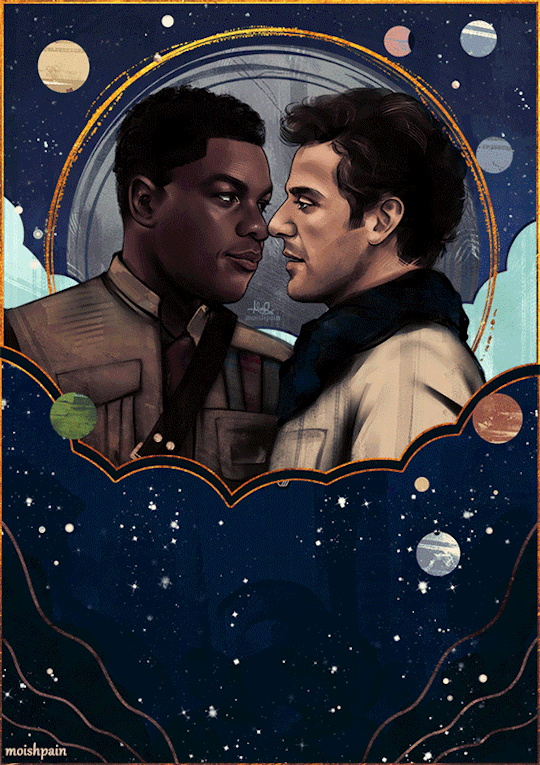
This can be seen as convergence culture interacting with subcultures and different forms of mass media.
Jenkins is of the opinion that within convergence culture everyone is a participant although each participant has a different degree of status and influence.
Reconnecting to this, Jenkins states that there is a difference between interactivity and participation.
Interactivity — refers to the ways that new technologies have been designed to be more responsive to consumer feedback. In almost every case, what you can do in an interactive environment is prestructured by the designer
Participation — is shaped by cultural and social protocols. More open-ended, less under the control of media producers and more under the control of media consumers
The Web allows consumers to participate in the production and distribution of Cultural Goods and Media. In the future, producers most accommodate consumers demand to participate or run risk of losing most active and passionate consumers.
There are two characteristic responses by media industries to this grassroots/participatory movement:
Prohibitionists — seeking to regulate and criminalize many forms of fan participation
Collaborationists — are trying new approaches that see fans as important collaborators in production of content and grassroots intermediates to help grow and spread the content
Jenkins then focuses on what legal actions have been made in order to allow or limit fan adaptation and participation. He gives various examples of how different companies control their intellectual property by intimidating fans into removing their content from the internet, or by allowing them to create and share their content when adhering to strict rules.
Jenkins also goes into details of the production and budgets of the many successful Star Wars fan films and projects, including pointing out what he sees as a favouritism on behalf of Lucasfilm for the more comedic parody fan films created by male fans as opposed to the more earnest slashfiction and slash viral videos created by female fans. This, Jenkins muses, is possibly due to Lucas’ distaste for erotic Star Wars content. In 2000 Lucasfilm created a designated website for their fan films that made it clear that fans may parody the existing universe but may not create a serious or earnest fanfiction which departs from the original narrative on their website.
Jenkins, then, finally does an examination of the various fan cultures that take place around the many Star Wars video games and how these actions have been triumphed or looked down upon by Lucasarts.
He concludes that no matter what reaction anyone has to the fans content, “having felt that power, fans and other subculture groups are not going to return to docility and invisibility” and they will simply “go further underground … but they aren’t going to stop creating”.
He further concludes that the makeup of the entire Star Wars universe would potentially benefit from creation along more participatory lines. Lucas and others with much loved intellectual property need to realize that producers need fans as much as fans need them.
Would you do what George Lucas did, by creating a web to let fans upload SHIPs between characters or even fan fictions?
Do you ship two characters together that are not part of the Star Wars franchise?
Let us know!
0 notes
Text
Convergence Culture: Where Old and New Media Collide (part I)
During Fall 2001, some photoshopped images of Bert from “Sesame Street” with Osama Bin Laden leaked in the Internet. These images came out after 9/11 as a joke to the whole world; not everyone was happy.

This event brings Henry Jenkins to introduce convergence culture to the world.
“Welcome to convergence culture where old and new collide, where grassroots and corporate media intersect, where the power of the media producer and the power of the media consumer interact in unpredictable ways” (Jenkins, 2)
In his book Convergence Culture: Where Old and New Media Collide he introduces three concepts that he analyzed throughout the book: Media Convergence, Participatory Culture and Collective Intelligence.
Convergence is a term that manages to describe technological, social and industrial changes depending on who is speaking and on what they are talking about. What Jenkins means for convergence is the flow of content across multiple platforms and the cooperation between different media industries.
By reconnecting to the event of “Bert is Evil”, the author talks about how the circulation of media content depends very much on the consumer’s active participation; with this he introduces the participatory culture.
The participatory culture consists in consumers who interact with each other according to a new set of rules. Basically users change the way in which media is conceived and crafted — by so doing, they can alter the meaning of the media. Not all participants are equal, in fact some have greater abilities that others.
But how does convergence happen? Jenkins answers this question by stating that convergence occurs in the brain of each consumer due to the interactions consumers have with other consumers.
He is of the opinion that each one of us constructs its own personal mythology from fragments of information extracted by the media. Since there is a lot of content due to the plenty amount of topics, people interact in order to share information. This tool is called Collective Intelligence which can be seen as a new and alternative source of media power. We learn how to use this source in our daily interaction with others.

Although Wired Magazine is of the opinion that Marshall McLuhan is the patron saint of the digital revolution, Jenkins states that Ithiel de Sola Pool is the “prophet of media convergence”. As a matter of fact, his book Technologies of Freedom is known to be the first book to lay out the concept of convergence as a force in order to change content in media industries. By tracing the origin of the concept of media convergence to Ithiel de Sola Pool, Jenkins gives an orthodox technological definition which is divided in two parts:
on one hand, a sing physical medium might perform a number of functions that were previously handled separately
on the other hand, a single cultural function or service can be carried by various different technologies.
With this, Jenkins also introduces the various dangers of convergence including concentrated media ownership.

Moreover, Jenkins talks about the Black Box Fallacy which is a strategy to describe the way that ‘convergence thinking’ is affecting the relationship between media, content and people. He begins by saying that there are two separate parts of every media:
the actual content
‘delivery systems’ — physical devices which we use to experience media. The problem with these systems is that whatever content they carry, they tend to change over time and become obsolete; this means that media is fluid while delivery systems are not.
Due to this fluidity, Jenkins states that many are of the idea that we are all moving in the direction of a singularity device of sorts which Jenkins calls Black Box. With this device, media will be conveyed by one device but Jenkins states that this is not possible because every time media content increases there will be the need of more devices.
Jenkins continues his book by talking about the logic of media convergence. He says that the new media lowered both the production and the distribution costs and thus facilitated the circulation of new media content. He is of the idea that convergence is also allowing media companies to accelerate the flow of media content across delivery channels and expand their revenue, while consumers are learning how to use these different technologies in order to bring the flow of media under their control.
In the introduction of Convergence Culture: Where Old and New Media Collide (the topic of this post), Jenkins ends the chapter by exposing the six following chapters by giving a quick summary of each. Among these, we may find the fourth chapter, which we will talk about in Part II.
Curious about Part II?
It’s coming out soon!!
0 notes
Text
Laws that CHOKE Creativity
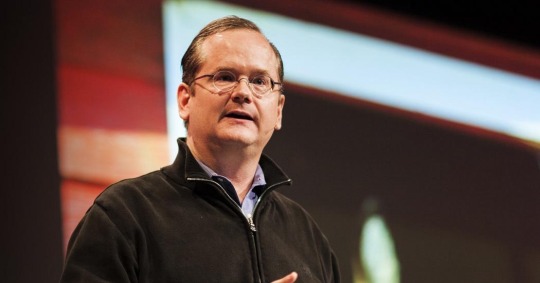
In Lawrence Lessig’s chapter, “Remix: How Creativity Is Being Strangled through the regulation” in the Social Media Reader by using Michael Mandiberg, Lessig clearly states his opinion on copyright, creativity, and remixing content.
He starts off by saying his goal is to inform “some stories, making an observation, and constructing an argument about what we need to do to protect the opportunity that technology holds for this society” (Lessig, 155).
There are 3 stories. The primary one is about whilst the elite spoke latin and the rest of the humans spoke other languages like English, French, and German. The elite human beings overlooked the hundreds and the masses omitted the elite.
The second tale is set John Philip Sousa and when he traveled to the united states Congress to talk about the phonograph. He did no longer liked these “speaking machines” and he even thought that it would ruin the artistic improvement of song. He looks lower back to when younger human beings would get collectively and sing, however now the phonographs have been all he heard.
Lessig stated that when younger people got collectively to sing, it changed into known as way of life. More in particular, it became referred to as examine/write way of life. This means that people could participate within the introduction and re-advent of the culture that they exist in. Sousa was afraid that the phonograph could jeopardize the examine/write tradition and create a study-handiest subculture–in which creativity is consumed, however the patron is not the author this time.
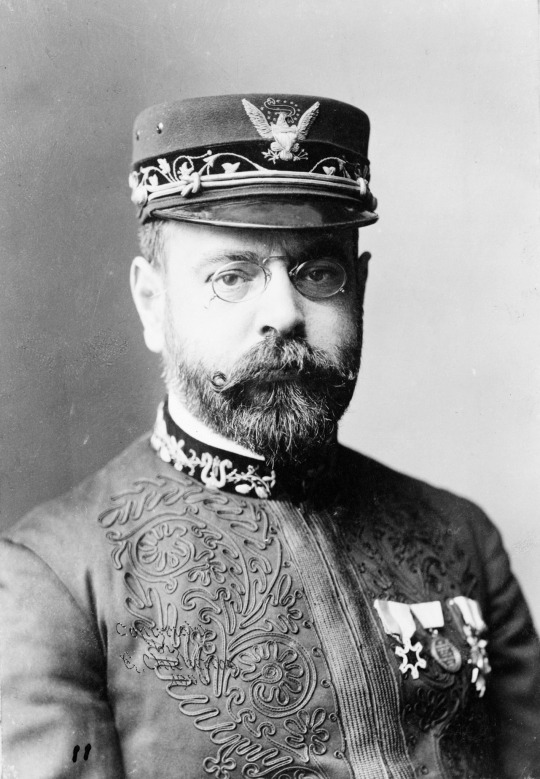
The third tale talks approximately about the United States’ battle against an apparent evil:
“a war against the dependence on alcohol, a war inspired by the feminist movement, a war inspired by ideas of progressive reform, and a war that was inspired by the thought that government could make us a better society” (Lessig, 156).
Roy Olmstead became worried within the federal investigation due to his unlawful manufacturing and distribution of alcohol. His case changed into heard by the ultimate courtroom and ultimately, they dominated that wiretapping isn't always a contravention of the Fourth amendment.
The introduction of generation into society started blurring the strains among moral and an moral interference with the authorities and residents’ non-public conversations, as an instance, the wiretap.
Lessig then discusses the system of studying a way to write. He also mentions quoting. He essentially says that the demise penalty is suitable when people plagiarize. He then puts it in a actual-existence scenario and makes use of an instance where it'd be honestly absurd is someone have been to “write the Hemingway estate and ask for permission to include three lines in an essay about Hemingway for your English class” (Lessig 157).
He then brings up the significance of writing and creating within the virtual age. Lessing believes that copyright is very crucial and critical to supporting unavoidable financial issues. but with new technology, copyright ought to evolve as technology does. it is unfair to use copyright legal guidelines about the books with television and film, as an example.
He discusses viable regulations for copyright.the primary one would be to differentiate among newbie and expert, announcing that copyright need to inspire both. An expert might be someone who does something for cash and an newbie does it for fun.
Remixing looks as if a awesome way for anyone to use copyright as it should be and efficiently. He makes use of examples of humans remixing songs and making mash up and how numerous it has emerged from the platform Youtube.
Lessig says that remixing is a technique for every person with access to a laptop. He says that all and sundry can use sounds, pics, and the video from tradition round us and remix them and create something extra effective than raw text ever may want to.
There is a battle between two architectures of manage: copyright and digital generation. He uses an example approximately the usage of books and how they aren’t made to be copied, but when you get at the net, each use produces a replica. This causes confusion and lots of gray area.
Another hassle is piracy. He mentions peer-to-peer piracy networks. he's extremely towards this type of sharing because those web sites replica content without the permission of the proprietor.
Because generation is continuously changing, Remixing which can exchange as well. The development of hybrid economy comes into play. Lessig Identifies 3 kinds of economies:
commercial economies
economies where money is not part of the exchange
economies where money and the relationship exists
The internet produced both industrial and sharing economies due to web sites that are used to sell merchandise and websites which might be used to proportion statistics without cost. but the net also has hybrid economies. A hybrid economic system is “in which a commercial entity leverages a sharing economy or a sharing entity leveraged a commercial economy” (Lessig, 163).
Lessig identifies kinds of modifications inside the world of copyright, prison law, and sharing/copying content. the first trade will be the log giving up the obsession with the copy. the second exchange revolves round peer-to-peer piracy and “to stop suing youngsters and begin suing for peace” (Lessig, 165).
He envisions a international wherein those proposals took place a decade in the past: Artists could have more money, there might be extra opposition in agencies, but content could be more effortlessly accessible, and There might not be a era of criminal surrounding us at the internet. Lessig believes that that is some thing on the way to positively effect the character of sharing and spreading art and different content in safer, more efficient, and great ways.
As an awful lot because the regulation wishes to change, society does as properly. humans want to reflect onconsideration on the copyright regulation as a way to create incentives for creation in preference to a manner to govern use of content. essentially, we need to consider copyright in a more fantastic manner.
Creative Commons licenses–released in 2003–have trade the manner humans can look at, use, and remix content material.
He even plugs the link where we will donate money to innovative Commons for its 6th birthday but notes that we cannot sing “satisfied Birthday” because it's miles below copyright.
He ends the chapter with a tale where he was asked to visit the affiliation of the Bar of the metropolis of latest York and speak. He notes the crimson velvet curtains and purple carpet. The room changed into complete of those who wanted to realize more about “fair use“. He then notes that the room reminded him of the Soviet structures’ tribunals. come what may he involves the conclusion that the contemporary machine of copyright can by no means work in the digital age; that youngsters may prevent creating or they may pressure a revolution. Lessig strongly believes that neither of these are appropriate.
In the end, he clarifies that he’s now not an abolitionist, he believes that copyright is an important part of a creative financial system, but it is able to use a few amendment. He says that children are residing their lives a crime and this is virtually corrupting democracy. His ending is a ���call to action” to prevent the battle.
What do you think about Lessig’s point? Do you think he is right?
Give us your opinion!!
0 notes
Text
Why Software Should Not Have Owners
Digital information technology contributes to the world by making it easier to copy and modify information, but not everyone agrees. The system of copyright gives software programs “owners”, most of whom aim to withhold software's potential benefit from the rest of the public. They would like to be the only ones who can copy and modify the software that we use. That's the reason for the increasingly nasty and draconian measures now used to enforce software copyright.
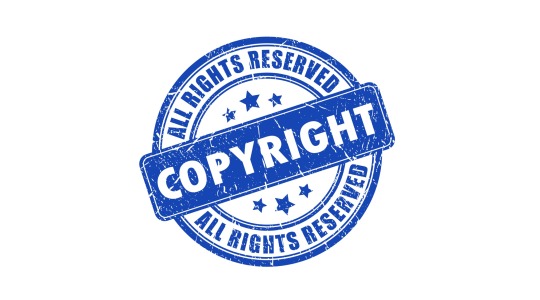
Prosecution (by the US government, at the SPA's request) of people such as MIT's David LaMacchia, not for copying software (he is not accused of copying any), but merely for leaving copying facilities unguarded and failing to censor their use. All four practices resemble those used in the former Soviet Union, where every copying machine had a guard to prevent forbidden copying, and where individuals had to copy information secretly and pass it from hand to hand as samizdat.
Owners say that they suffer “harm” or “economic loss” when users copy programs themselves. But the copying has no direct effect on the owner, and it harms no one. The owner can lose only if the person who made the copy would otherwise have paid for one from the owner. Yet the owners compute their “losses” as if each and every one would have bought a copy.

Typically companies, not authors, hold the copyrights on software, but we are expected to ignore this discrepancy. To those who propose this as an ethical axiom—the author is more important than you— Stallman calls it bunk.
Whether you give a copy to your friend affects you and your friend much more than it affects me.
The final argument made for having owners of software is that this leads to production of more software. It assumes that production of software is what we want, whether the software has owners or not. But if a program has an owner, this very much affects what it is, and what you can do with a copy if you buy one.
The system of owners of software encourages software owners to produce something—but not what society really needs. But what software owners typically deliver is a black box that we can't study or change.
When software owners tell us that helping our neighbors in a natural way is “piracy”, they pollute our society's civic spirit. This is why we say that free software is a matter of freedom, not price. Some people write useful software for the pleasure of writing it or for admiration and love; but if we want more software than those people write, we need to raise funds. Some free software developers make money by selling support services.

In 1994, Cygnus Support, with around 50 employees, estimated that about 15 percent of its staff activity was free software development—a respectable percentage for a software company.
To use free software is to make a political and ethical choice asserting the right to learn, and share what we learn with others. Free software has become the foundation of a learning society where we share our knowledge in a way that others can build upon and enjoy.
— Free Software Foundation (FSF)
0 notes
Text
The Cleaners (2018)
We are in a cultural moment in which the impact of social media is not something that we are aware of only when we are in our computer or cellphone.
The Cleaners is a 2018 documentary produced by directors Moritz Riesewieck and Hans Block.
The film starts with one unseen corner of the internet: content moderators that work for major platforms spending their time looking for pictures and images that have been flagged for being objectionable.
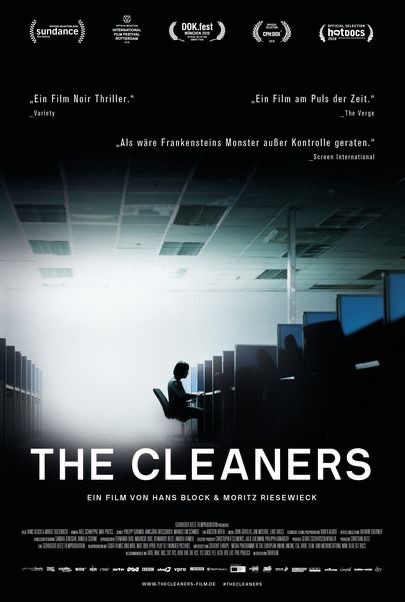
The documentary is about the outsourced workers that companies use to determine whether photos and videos, that have been shared online, should be allowed to circulate the Internet. The film tracks people that are based in Manila, Philippines that spend their time searching for these contents such as terrorist videos, political propaganda, self-harm videos and also child pornography breaking them into categories: “ignore” where they let the post stand and “delete” where the content is removed.
In the course of the documentary many of these workers have been interviewed by also saying that they did not know much in the content until they started working by removing them.
The documentary is simply about how social networking platforms have created a feedback loop that is harming our real world.
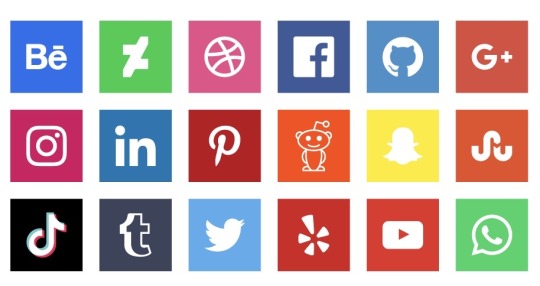
The platforms in question have been designed to generate interest and engagement above everything else, and its in a platform’s interest to never show a user news or information that would challenge their world view, thus leading to ‘bubbles’ where people are only fed with the information they want to see.
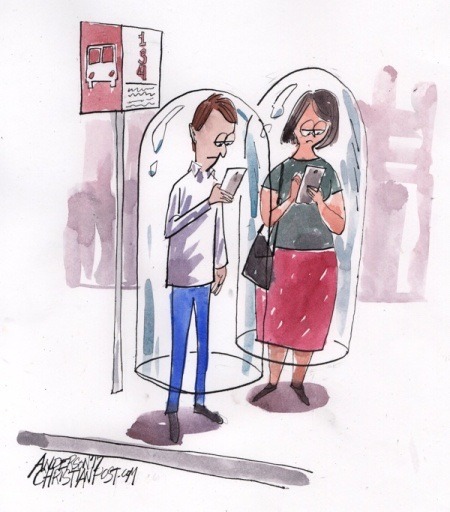
We find ourselves in a situation in which these platforms have become tuned to inspire and provoke as much extreme behavior as possible.
An example of ‘extreme behavior’ was the Blue Whale Challenge — a social network phenomenon dating from 2016 that is claimed to exist in several countries. It is intended to be a game, consisting of several tasks assigned to players by administrators over a 50-day period. Initially innocuous before introducing elements of self’harm and the final challenge requiring the player to commit suicide.
The documentary is well produced. The two producers did a good job in taking subject matter that be too heady and making it seem vibrant. The movie argues that no matter what rhetoric they talk about, these tech giants are capitalistic endeavors and as a result are simply refusing to acknowledge the negative impact they are having on our culture because doing so it would be bad for business. The film gives the sensation that it would not be hard to to go away without the need to immediately delete Twitter or Facebook.
Have you seen The Cleaners? What do you think about the influence social media has on society?
Let us know in the comments!
0 notes
Text
The Public Sphere – Twitter
Habermas defined the term public as those events and occasions that are open to all contrarily to the private ones that are close and exclusive affairs. He characterizes some important dimensions of the public sphere:
formation of public opinion
all citizens have access
conference in unrestricted fashion
debate over the general rules governing relations
Habermas’s original concept of the public sphere is based on the Marxian political theory, in fact he stresses its relevance in the fact that private property and skills are required for participating in the public sphere BUT wage workers have been excluded from these resources; the bourgeois class serves and advances particular interests NOT the general interests of society; alternatives to the bourgeois state that serves class interests.

In discussions regarding the Internet and the public sphere, authors stressed about the potential but also the limit of the Internet to advance political communication.
Habermas stresses both aspects of political communication and political economy.
He stresses that the proper task of the public sphere is that society is engaged in a critical public debate; but he also points out that the public sphere is a question of the command of resources.
Habermas says that Marx’s work is particularly relevant for the second dimension of the public sphere.
“Critique demolished all fictions to which the idea of the public sphere or civil society appealed. In the first place, the social preconditions for the equality of opportunity were obviously lacking, namely: that any person with skill and ‘luck’ could attain the status of property owner and thus the qualifications of a private person granted access to the public sphere, property and education. The public sphere with which Marx saw himself confronted contradicted its own principle of universal accessibility” (Habermas)
Still, Habermas does not idealize the bourgeois public sphere but applies an elegant dialectical logic to show that the bourgeois ideals and values find their own limits in the existence of stratification and class.
His theory of the public sphere is an ideology-critical study in the tradition of Adorno’s method of immanent critique that confronts the ideals of the public sphere with its capitalist reality and then uncovers its ideological character.
True public sphere can only exist in a participatory society.
The liberal ideology postulates individual freedoms as universal right BUT the particularistic class character of capitalism undermines these rights and creates inequality, thus unequal access to the public sphere.
There are two limitations of the bourgeois public sphere that Habermas discusses:
1. limitation of freedom of speech and public opinion — individuals do not have the same education and material resources for participating in the public sphere
2. limitation of freedom of association and assembly — big political and economic organizations “enjoy an oligopoly of the plubicistically effective and politically relevant formation of assemblies and associations”
Discussing whether the Internet or certain internet platforms constitutes a public sphere, one should take both political communication and political economy in consideration. This brings us to ask some questions that determine the existence of a public sphere.
TWITTER
The typical Twitter user was in 2013 between 18 and 34 years old, who had a university degree and no children. The majority of the users came form the United States and its typical user, in 2013, was part of a younger age (62%), white (67%) and earned more than $100.000 per year (58%).

There are stratification patterns that are created by age, ethnicity and class shape the use of Twitter. The idea of the end of information inequality due to the rapid adoption of Internet is actually a myth. Stratification does not concern physical access to the Internet BUT the use of this technology and the skills required for its use.
Unfortunately, as long as there will be a stratified society, information inequality will still exist.
Murthy argues that the influences of ordinary people in Twitter can be minimal but that the medium could be potentially democratizing in the fact that it is a megafone that makes every voice public.
But, how must society change in order to make asymmetrical visibility disappear?
Capitalist structure operate both in economy and in culture. Murthy still argues that tweets circulate in the form of re-tweets and that as a result, a person’s voice can be amplified.
How about seeing both Twitter and Facebook as platforms for revolutions?
In 2011, there were revolutions and protests that were actually seen as Twitter’s and Facebook’s revolutions. This has to do with Internet access rates.
In the Egyptian Revolution, social media has been relevant only for because it “contributed to the build-up of dissent, facilitated the actual organization of protests, and disseminated news of the protests across the region and to the wider world. If the rise of digital communications technology did not cause the uprisings, it strengthened them” (Curran)

Back to Twitter, it started as a profit-oriented corporation without a business model. At first it did not use adversiting, but then in 2009 the platform revised its terms of use so that advertising and targeted advertising became possible.
Twitter’s capital accumulation model uses thre mechanisms:
promoted tweets — advertising tweets that appear at the top of the search result lists for searches conducted by targeted user groups
promoted trends — to drive conversations and interest around you brand or product by capturing a user’s attention
promoted account — featured in search results and within the ‘Who To Follow’ section
Users that tweet constitute an audience commodity. The difference between the audience commodity on traditional mass media and in Twitter is that in the case the users are also content producers; there is a user-generated content and the users engage in permanent creative activity, communication and content-production.
The permanent activity of users and their stays of prosumers, in the case of the Internet audience commodity is a prosumer commodity — this category does not signify a democratization of the media towards a participatory system but the total commodification of human creativity.
Going back to Habermas, he argues, as mentioned previously, that political economy and political communication are two important aspects regarding the public sphere.
According to Habermas, the public sphere is a sphere of political debate. But the real question is what does political communication have to do with Twitter?
The social media is predominantly dominant ed by the young, educated middle class and excludes other political groups. Those who have higher incomes and better education and also those who are politically interested and informed, dominate political communication.
Politics is a topic of minor consideration on Twitter which is dominated by entertainment. Twitter is an information medium, this not a communication tool.
To sum up...
— Habermas’s concept of the public sphere stresses that a public sphere is a space of political communication and that access to resources that allow citizens to participate in the public sphere
— His notion of public sphere is a critical concept that helps to analyze whether modern society lives up to its own expectation. It allows testing for freedom of speech and public opinion are realized through the distribution of educational and material resources
— Twitter is not a public sphere and it should neither be the subject of a possible hope for the renewal of democracy and publication nor the cause of concerns about violence. The things we should be mostly concerned about is inequality in society and how to alleviate this inequality.
— Social media do not cause revolutions. Social media do not necessarily support or limit rebellions but rather lose contradictory potentials that stand in contradiction with influences by the state.
What do you think about the public sphere? What about Twitter?
Give us your opinion!
0 notes
Text
Lo and Behold, Reveries of the Connected World
“Lo and Behold, Reveries of the Connected World” is an American documentary directed by Werner Herzog.
The documentary ponders the existential impacts of not only the Internet but also robotics, AI (artificial intelligence), the Internet of Things and more.
Werner decides to divide the documentary in ten different chapters in which he starts narrating the birthplace of the Internet by then arriving to the future with AI. Thus, he examines the past, the present and the future of the Internet and how it affects human interaction and modern society.
Within each topic, Herzog is compassionate but stoic. He does not judge but is not skeptical either. In different ways, the documentary depicts the negative side of humanity, commenting on the world’s materialism, cruelty and also abuse of power.
Herzog makes a relaxed but alert guide throughout by using narration sparsely but memorably and letting us hear his off-screen voice asking questions.
The documentary was quite interesting, it covered the past, the present and the future but in my opinion in a disorganized way. It jumped from one argument to another and another one again, finding it quite hard to follow. Despite this, in order to understand the history of Internet, it seems to be the best way.
0 notes
Text
The Californian Ideology
“The Californian Ideology” is an essay written by Richard Barbook and Andy Cameron. The essay appears to be a response to the path the digital era was taking in the early 90s. In the essay, the two writers cover arguments that we will see together.

There is an emerging global orthodoxy concerning the relation between society, technology and politics. This orthodoxy is called Californian Ideology, in honour of where it originated. The Californian Ideology is a mix of cybernetics, free market economics and counter-culture libertarianism. This new faith has been embraced by many, including the President of the United States.
Not sure if everyone is familiar with a man called Marshal McLuhan. How could you not know him! Got it, brief parenthesis.
Marshall McLuhan was a Canadian communications theorist and educator, whose main quote is “the medium is the message” which summarized his view of the powerful influence television, computers and other electronic devices had on shaping styles of thinking other than people.
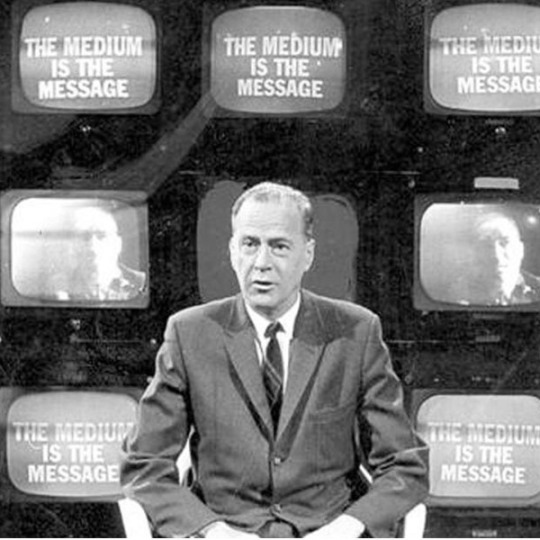
Where were we? Oh right...
In the 60s, McLuhan thought that the power of big business and big government would be overthrown by the empowering effects new technology had on individuals. Many hippies were influenced by him and believed that technological progress would turn their non-conformist libertarian principles into a political fact. They trusted that the convergence of media, computing and telecommunications would result in electronic direct democracy - the elecontronic agora - in which everyone would be able to express their opinion without the fear of being censored.
The US president did not like this situation.

During the 70s and 80s, many fundamental advances in personal computing had been made by people that were influenced by the technological optimism of the new left and the counter-culture. Believe it or not, but in the 90s, some ex-hippies became owners and managers of high-tech corporations. These corporations remain dependent on key people who can research and create original products. These skilled workers form the so-called virtual class — the techno-intelligentsia of cognitive scientists, engineers and other communications specialists. Since these workers are both a privileged part of the labour forces and also heirs of the radical ideas of the community media activists, the Californian Ideology reflects the disciplines of market economics and the freedoms of hippie artisanship. This “crazy” hybrid is only made prossible through a universal belief in technological determinism.
The Californian Ideology, which has McLuhan as its patron saint, has emerged from an unexpected collision of right-wing neo-liberalism, counter-culture radicalism and technological determinism — a hybrid ideology with all its ambiguities and contradictions. These contradiction are pronounced in the opposing visions of the future:
On one side, the anti-corporate purity of the New Left has been preserved by the advocates of the virtual community. According to their “guru” (Howard Rheingold) the values of the counter-cultures are shaping the development of new information technology. This brings community activists to be able to use new media to replace corporate capitalism and big government with high-tech economy
On the other side, the West Coast ideologues embraced the laissez-faire ideology of their enemy.
With this version of the Californian Ideology, each member of the virtual class is promised the opportunity to become a successful high-tech entrepeneur.
In 1994, with the victory of Gingrich’s party in in the legislative elections, the right-wing version of the Californian Ideology is in ascendance. Thus, the technologies of the computer and the Net were invented with the aid of massive state subsidies. The history of the internet contradicts the tenets of the neoliberal ideologues. The Net’s development was almost completely dependent on the American federal government. At the same time, many of the key Net programs and applications were invented either by hobbyists or professionals that were working in their spare times.

Despite the central role played by public intervention in developing hypermedia, the Californian Ideology is an anti-statist dogma.
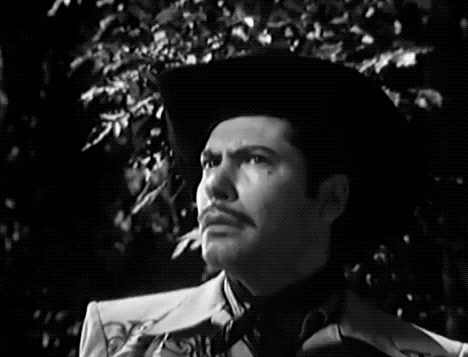
The ascendency of this dogma is a result of the failure of renewal in the United States during the late 60s and early 70s. Although ideologies of California celebrate the libertarian individualism of the hippies, they never discuss the political/social demands of the counter-culture. Individual freedom cannot be achieved by rebelling against the system BUT through submission to the natural law of technological progress and free market.
Already back then, the Californian Ideology feared that technologies were turning into the machines of dominance.
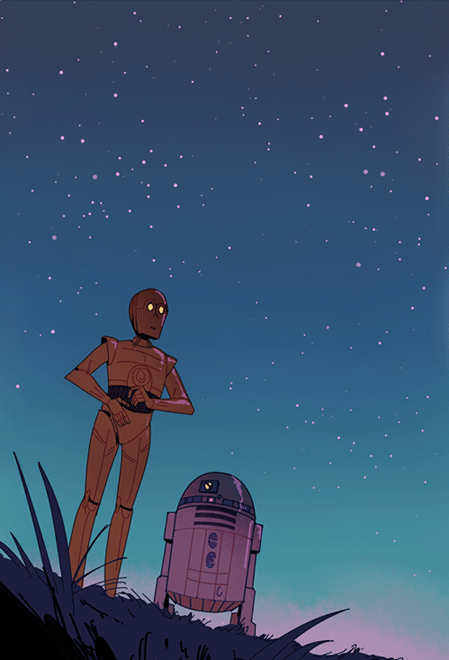
Techno-utopians, though, are of the idea that it is possible to obtain slave-like la our from inanimate machines; but this factor will never cancel the need of humans to invent, build and maintain the machines in the first place.
Going on with their essay, Barbook and Cameron, start talking about entering the modern era.
At the beginning, West Coast hippies were the key role in creating our contemporary vision of social liberation. As a consequence, feminism, drug culture, gay liberation and ethnic identity have stopped being marginal issues. Incredible to say but, in this way California became the center of the ideology which denies the relevance of these new social subjects.
“The original promise of the Californian Ideology, was that the computers would liberate us from the old forms of political controls, and we would become Randian heroes, in control of our own destiny. Instead, today, we feel the opposite—that we are helpless components in a global system— a system that is controlled by a rigid logic that we are powerless to challenge or to change.”
REFERENCES:
Barbook, Richard. Andy Cameron, “The Californian Ideology”
0 notes
Text
Internet was WHAT?
Probably a high percentage knows that Internet really expanded between the 1980s and the 1990s, specially thanks to Internet pioneers that decided to come up with new terms such as “cyberspace” or with new acronyms like “MOO” and “MUD” (supposedly might be referred to videogames)

Yes you already knew that, of course. But do you know how Internet actually was? It was the coolest war machine! Kind of...
I will explain myself better trying to wrap up the basic concepts:
Internet started as a small publicly owned computer network established in 1969 in the United States. At the time it was not called how we know it today but it was called internetworking, in fact the term Internet only emerged in 1974 as an abbreviation. The “modern” Internet dates from 1983 with the establishment of a network of networks independent of the US armed forces.
A moment of transition happened when CERN (European Organization for Nuclear Research) adopted internet protocol (IP) for its internal connection and then consequently, in 1989, they opened their first external IP connection.
It’s expansion was also contributed by Globalization which was at its first steps. Naturally, further in the years Internet returned the favor by letting Globalization actually happen.

So, with the internationalisation of the internet, it’s first key applications were e-mails and bulletin boards. And believe it or not, the world wide web (or as we all know it as WWW) publicly launched in 1991. Then of course, the new century saw the rise of social media with the launch of Facebook in 2004 and consequently in 2010, smartphones took off.

But the most absurd part is internet’s technological innovation.
The Internet started as a vast machine that occupied a whole room and turned into a normal object that we can carry around and keep on our laps
Internet went through different developments such as computer networking, shared codes for transporting and addressing communication, and of cloud computing
The Internet became a connective software that facilitated accessing, storage, linking
Internet’s development of communications infrastructure.
Can you believe that Internet did all this in just thirty years? But the most important part was how Internet was at the actual beginning.
Remember when I said that in 1989 CERN opened their first external IP connection? Do you think that’s casual? I don’t think so.
Even though Internet is seen as an agency of peace, it was actually a product of the Cold War.
In 1957, the Soviet Union launched a satellite orbiting the Earth; a factor that was not really appreciated by the Pentagon, which saw this action both as a demonstration but also as a threat. In fact, the Pentagon set up the Advanced Research Projects Agency (ARPA)— a new, independent military body whose aim was to bridge the space gap and to ensure that a technological defeat from the Soviet Union would never happen again. The main idea was also to have one single network in order to maintain all the information together and also to have all different computers around the world function together as a unit. This network was called ARPANET.
Computer networking could facilitate in some way the development of a sophisticated military command and control system that was capable of withstanding a nuclear attack from the Soviet Union. This idea led the military to sponsor a system without a command center that would be destroyed by the enemy in case of attack. This was not a problem because the military also had the idea of a development of network technology that would permit the use of the system even if some parts were destroyed. The military had different concerns because they wanted to have a networking system that could serve different specialized military tasks; in fact, this concern incouraged the creation of a diverse system that allowed different networks to be incorporated.
The military seemed young Tony Starks, huh?

Yes the military did it’s part, but what about other developments?
The military-scientific complex shaped the Internet but also the American counterculture did its part in the 1980s. Basically the counterculture reconceived how the computer could be used to advance its vision of the future. In fact, its activists transformed it from a tool of a techno-elite into a creator of virtual communities, a sub-cultural playground and an agency of democracy.
That’s not it.
A third influence was a European welfarist tradition that created great public health and broadcasting systems. While the internet was born in the US, the world wide web was created by Tim Berners-Lee.
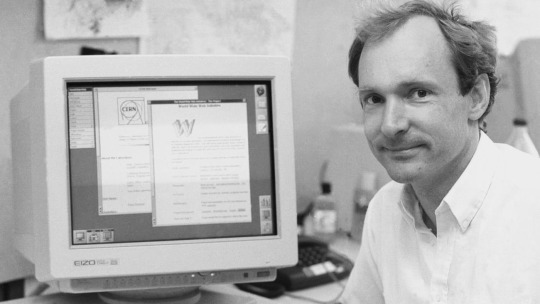
He was inspired by two fundamental ideas:
opening up access to a public good
bringing people into communion with each other
Berners-Lee had the desire not to promote the web through a private company because he thought it might trigger competition and lead the web to be divided into different domains. This would destroy his conception of a universal medium for sharing information.
Now my actual question is: did you really know all THIS? Because I did not.

Starting off, it was incredibile how the military thought of a way to use the network in order to keep their data secret but only knowledgeable among the people who actually had to know the facts; in fact there was a contract between the military and scientists in order to keep the situation a secret. We can call that era of internet WEB 1.0 and the one of this era WEB 2.0.
The Internet is a complete different world now, in which you can search things and probably have an opinion, even though at some point you couldn’t have that either, or at least you could give your opinion but it wouldn’t matter.
Unfortunately there is also another kind of web called the dark web, which are networks that use the Internet but require a specific kind of software, configurations and also authorizations to access. Also the internet has its dark side.
With the rise of social media the Internet completely changed. From what was a military experiment, it turned out to be a daily necessity for everyone: from searching important things such as news to also looking for memes or school-related articles. Not to mention also how the internet and social media became a platform that gave access to bullism or actually cyberbullism; apparently with the Internet things can get better but also worse.
If the old Internet could see where the new Internet is at, probably it would tear its hair off.
REFERENCES:
Curran, James. “The Internet of history: rethinking the internet’s past”, in Misunderstanding the Internet
Levine, Yasha. Surveillance Valley: The Secret Military History of the Internet
1 note
·
View note